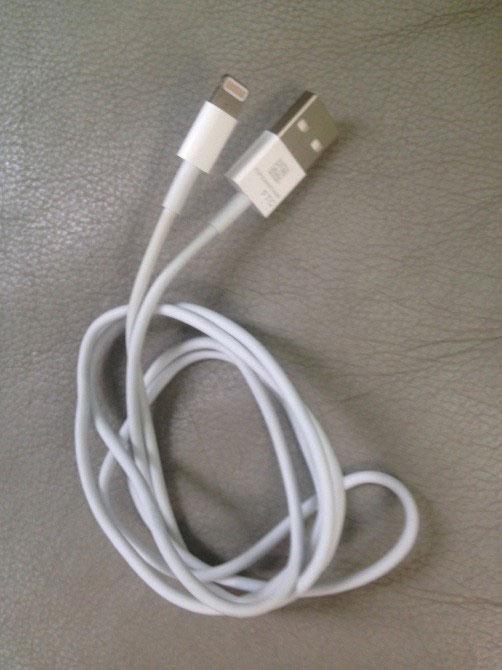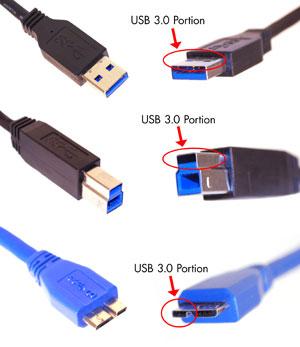Apple's new 9-pin Dock Connector for iPhone 5 may support USB 3.0
Apple hasn't yet introduced any technical specifications for the new iPhone 5 Dock Connector, so its pinouts and physical shape have only been evident from spy photos of components.
However, Apple's latest crop of Macs have all adopted support for USB 3.0, an interesting development simply because Apple has also put its weight behind Thunderbolt, an even faster data interconnect that supports 20Gbps transfers.
Why not Thunderbolt?
However, Thunderbolt not only requires 20 pin connectors but also requires an Intel-designed chip that multiplexes DisplayPort video with PCI Express signals. While modern Macs have Intel chips and support a PCIe architecture, no iOS devices do.
Instead, they use ARM architecture chips with no PCIe interface, and generate VGA/HDMI video rather than Display Port signals. That rules out any support for Thunderbolt and its blazing fast speeds that iOS devices couldn't make any effective use of anyway.
However, Intel's parallel USB specification can work on any architecture; Apple's ARM-based iPods have supported USB 2.0 since Apple first introduced its 30-pin connector on the third generation iPods in 2003.
That's when Apple began transitioning from Firewire (widespread on Macs at the time but rare on PCs) to USB. And that transition only happened as USB 2.0 began to offer speeds competitive with Firewire (the first generation of USB was very slow, providing a significant edge to Firewire in terms of sync time).
Why USB 3.0?
Apple has shifted the pin out assignments of its existing 30-pin Dock Connector several times over the past nine years, finally ending support for Firewire while adding features such as HDMI video output.
With the advent of last year's AirPlay wireless video distribution and iOS 5's WiFi sync, the need for a bulky connector supplying 30 pins of wired connectivity has diminished. However, as iOS devices gain storage capacity and as apps, photos and particularly 1080p high definition videos balloon in size, the need for a faster sync method has increased.
By shifting its iOS Dock Connector to USB 3.0, Apple could gain the ability to sync data at much faster speeds, with transfers reaching 5Gbps, ten times faster than the top 480Mbps rate of USB 2.0.
Doing so now would also allow Apple to essentially own the USB 3.0 Dock peripheral market, because it is using a proprietary connector, similar to the MagSafe power adapters it added to MacBooks (killing the third party market for Mac power adapters).
Slow progress for USB 3.0 so far
While a variety of PC makers have added USB 3.0 support to their computers, many well ahead of Apple (which only started supporting USB 3.0 on new Macs this summer), the new standard hasn't aggressively taken off. Many new PCs sport two sets of USB connectors: one only supporting USB 2.0 while special blue-colored ports handle the faster USB 3.0. Apple's newest Macs support both standards on all their USB ports.
PC adoption of USB 3.0 peripherals was also stymied by the fact that Microsoft's Windows 7 didn't support USB 3.0 from the start, as well as growing pains related to buggy drivers, chipsets and motherboard BIOS that have all hampered the new specification's launch much the same way that the original USB failed to rapidly take off in the mid 1990s.
That is, until Apple added USB to the original iMac in 1998 as the only way to connect peripherals. After that occured, devices supporting USB 1.0 exploded. Other PC makers continued to ship older PS/2 keyboards and mice well into the next decade, simply because they were slightly cheaper.
Apple has similarly taken over control of other emerging standards, including DisplayPort, which was only in minor use before Apple added it to its Macs across the board using a smaller "Mini DisplayPort" connector. Most PCs still ship with HDMI/DVI or even VGA ports, which Apple abandoned many years ago.
Adding USB 3.0 support to the iPhone 5 and iPod touch (and upcoming iPad and iPad mini models) would give Apple a fast new advantage in sync rates, comparable to the lead the first iPods enjoyed over other MP3 players on the market shackled to the much slower USB 1.0.
While some Android licenses have already shipped devices with support for USB 3.0, they've used the standard "B" peripheral USB 3.0 ports, which like full sized DisplayPort, are much larger and bulkier than necessary.
 Daniel Eran Dilger
Daniel Eran Dilger












 Chip Loder
Chip Loder
 Andrew Orr
Andrew Orr
 Marko Zivkovic
Marko Zivkovic
 David Schloss
David Schloss

 Malcolm Owen
Malcolm Owen

 William Gallagher
William Gallagher







